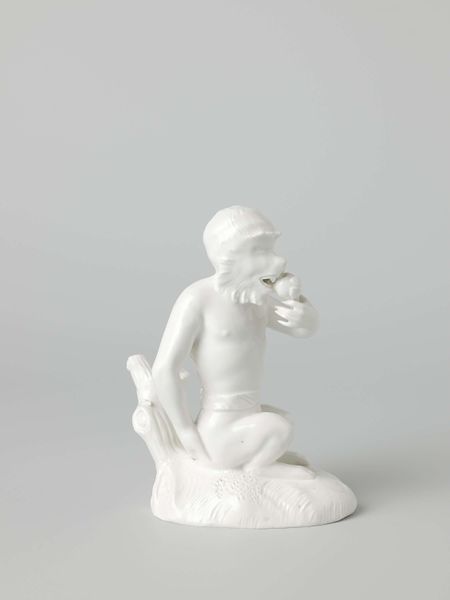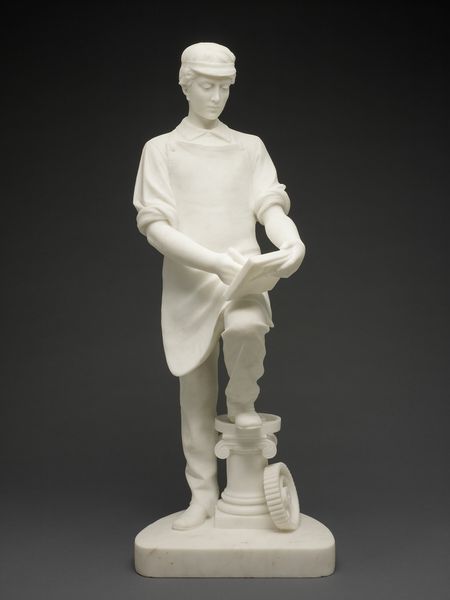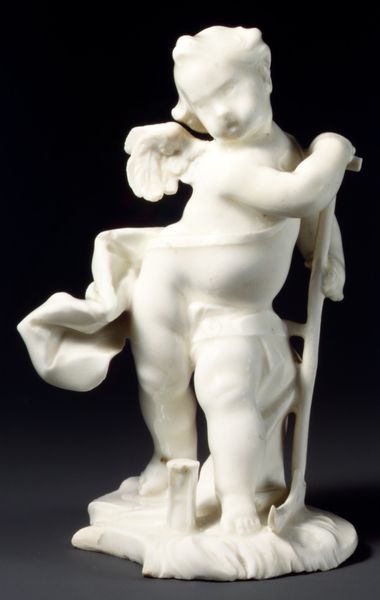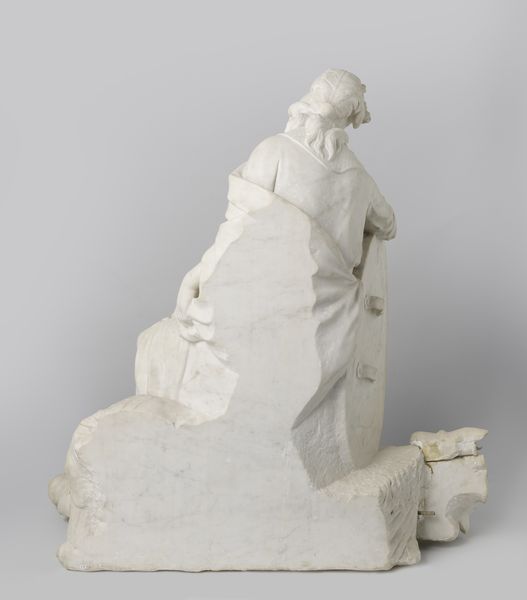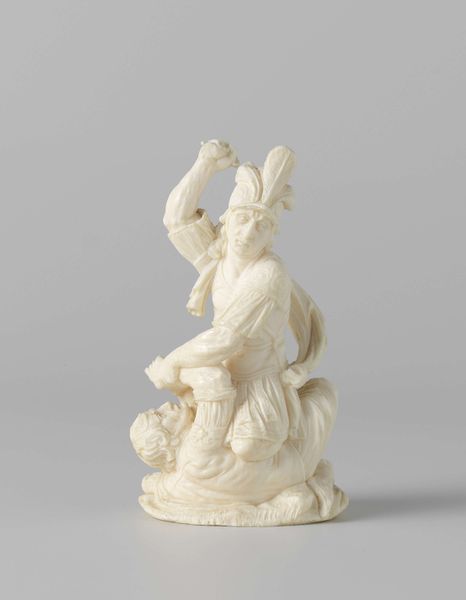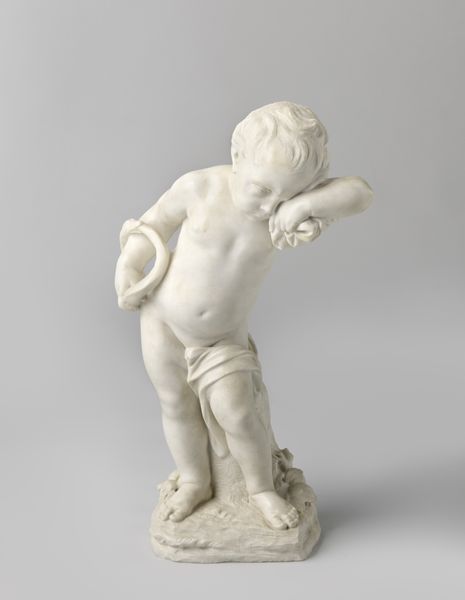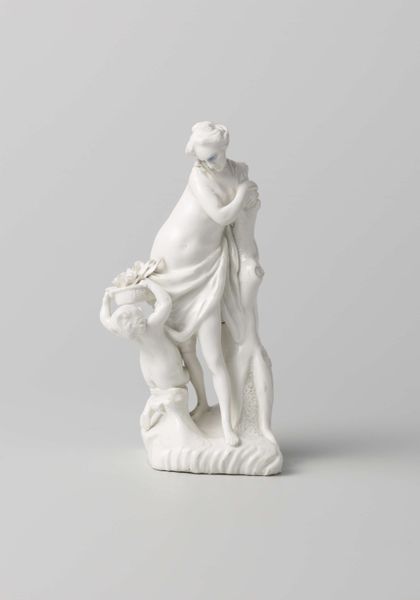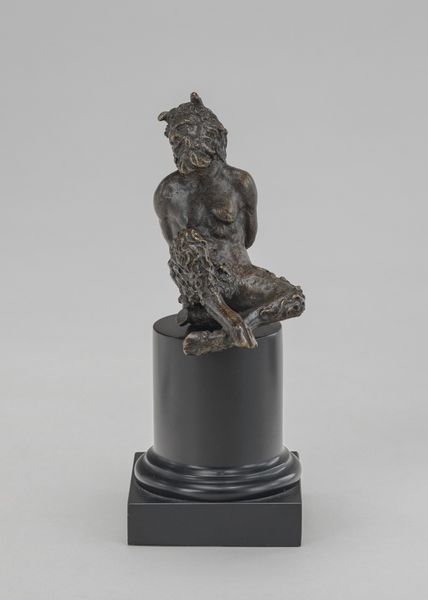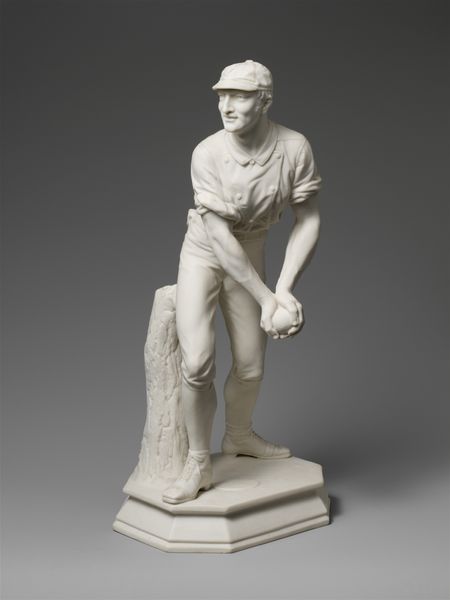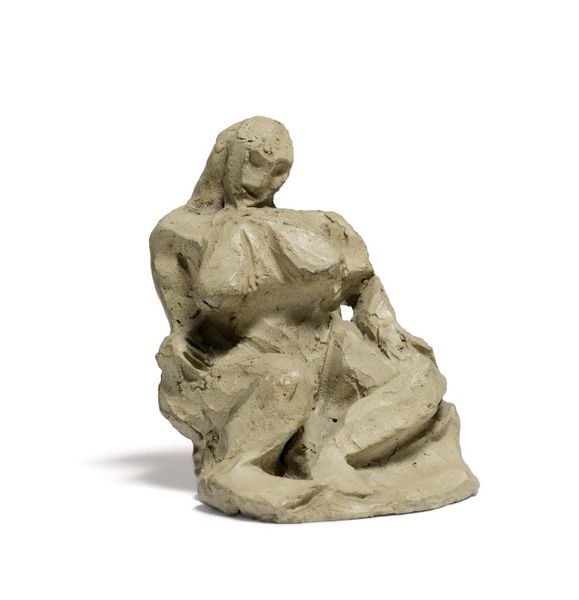
ceramic, porcelain, sculpture
#
sculpture
#
ceramic
#
porcelain
#
sculpture
#
decorative-art
Dimensions: Height: 10 in. (25.4 cm)
Copyright: Public Domain
Editor: So, here we have a porcelain sculpture, "Pulcinella," made sometime between 1759 and 1780 by the Real Fabrica de Buen Retiro. It has such a playful energy; he almost seems to be celebrating. What do you see in this figure, considering its historical context? Curator: Well, immediately, the mask tells us a lot. This isn't just any merrymaker. It's Pulcinella, a stock character from the Commedia dell'Arte. His raised fist… it’s a gesture loaded with ambiguity. Is it triumph? Defiance? Despair? And the horn tied to his chest – is that a symbol of plenty or perhaps a mocking gesture towards societal norms? The piece sits on a mass of smaller forms, hinting at daily life. I wonder, what collective memories might this figure evoke for viewers of that era? Editor: So, it’s not just a standalone figure; it's part of a broader tradition and a commentary on society at the time. The mask conceals, but also reveals. Curator: Precisely! Masks have always been powerful symbols – think about ritual, theatre, anonymity, transformation. Pulcinella embodies a tension between visibility and concealment. He’s both present and absent, a critique delivered through comedic performance. What happens when we start to unpack that psychological weight, carried by this particular symbol, through generations? Editor: It’s fascinating to think how a single character can embody so much! He is really preserved through generations! It changes my appreciation for the sculpture entirely, to think of it less as a pretty decorative piece and more as a container of complex cultural meanings. Curator: And that’s often the joy of exploring art, isn't it? Discovering the layers of meaning beneath the surface. Editor: Absolutely, it definitely brings more questions to mind. Thank you for your amazing cultural context insights!
Comments
No comments
Be the first to comment and join the conversation on the ultimate creative platform.

